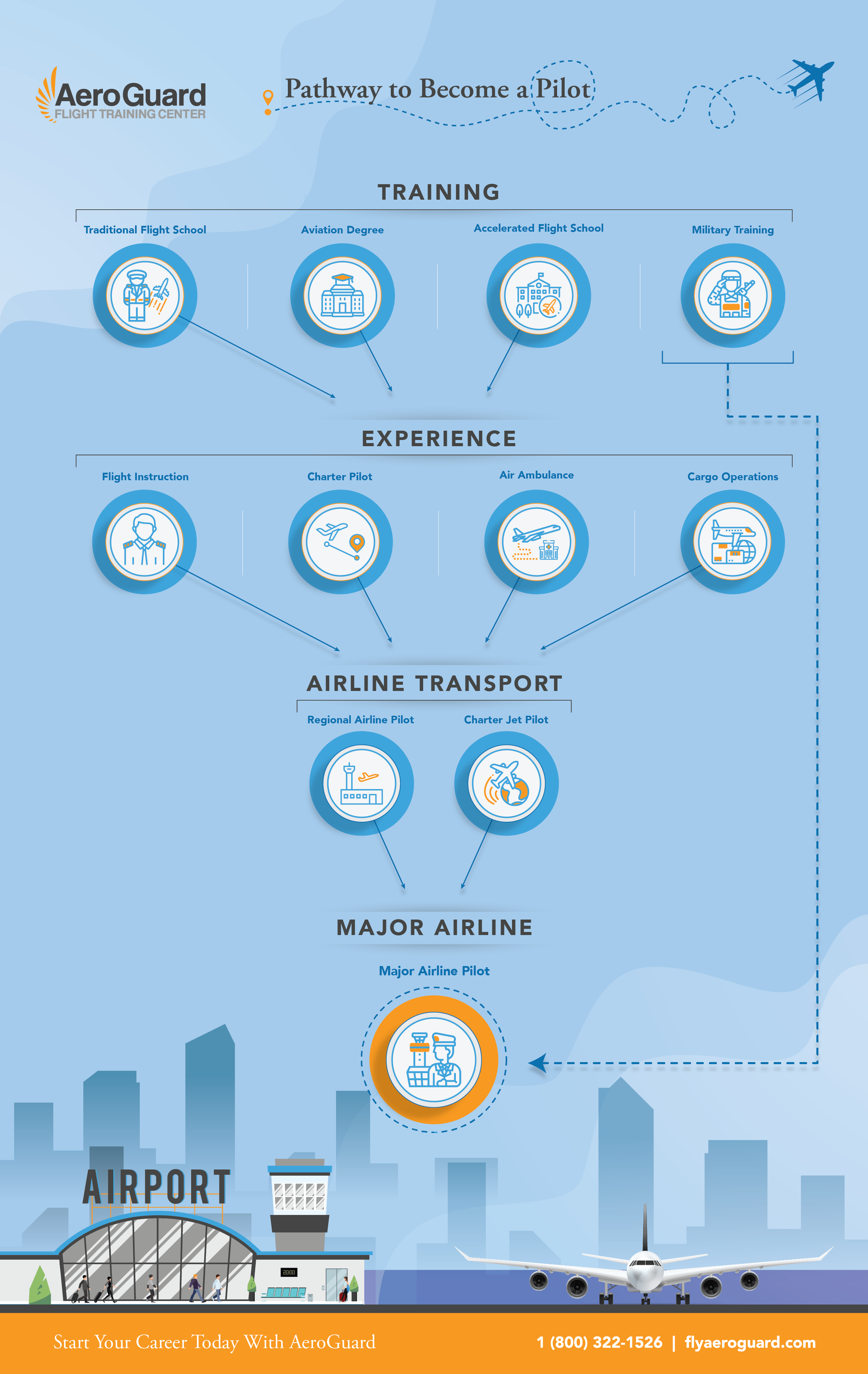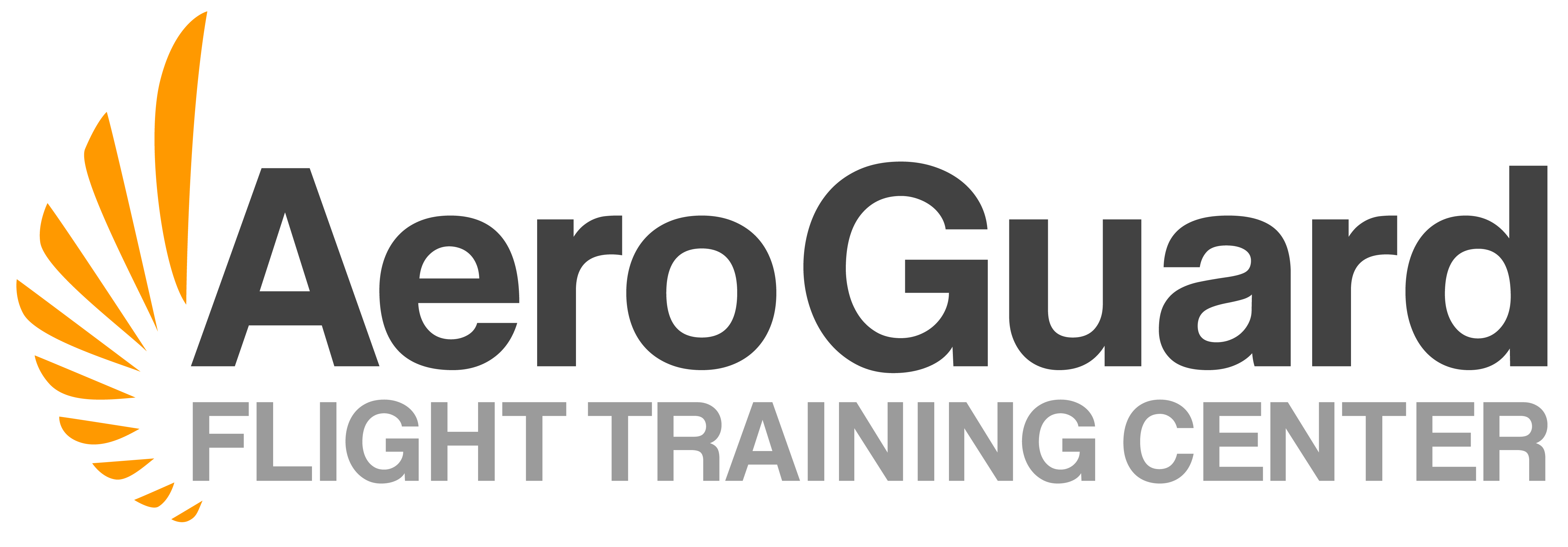Pilot Career Path
For many years, there has been a common misconception that the pilot career path was to go through the military, however that is not the case. Civilian training options are available for those who wish to start a career as a professional pilot. Each of these commercial pilot career paths require different levels of commitment, requirements, and experience, but can lead to working for a Major Airline Carrier.
Civilian Flight Training
When entering the civilian aviator route, the first step is flight training. Some flight training can be done while still in high school but for the most part, if this is something you want to do as a career then consider this as your “higher education” path, and ensure you have your high school diploma or GED. There are many types of flight schools a student can choose from, so it’s important to investigate and ask questions about each one to decide which route would be best for you and your career goals. The main options you would usually see are accelerated flight schools, traditional flight school and aviation degree schools. Any of these types of schools can put you on the airline pilot career path you need, so it’s a matter of personal learning preference and style.
Accelerated Flight School
AeroGuard Flight Training Center is considered mostly an accelerated flight school with our Pilot Pathway Program. These flight schools offer full-time, fast-paced, structured flight training that set students on an airline pilot career path toward one of their regional partner airlines. These schools will allow students to receive all their initial certifications and ratings in as little as 12 months. This will be the fastest way to an airline career.
Traditional Flight School
These flight schools have a “pay-as-you-go” relationship with students. This means that students rent a plane and flight instructor as needed to complete their various licenses and certifications on their own schedule. This is more of a flexible pilot career path, allowing students to individually choose which certificates and ratings they want to accomplish as well as what days and times of the week they are willing to train. Students generally choose this option when they’re interested in a part-time flight training schedule.
Aviation Degree
This route is going through a college or university. This commercial pilot career path allows students to earn an aviation related degree while students do their flight training in “lab” style classes. Some larger universities have their own planes and can train on-site while others may send students to an affiliate flight school similar to AeroGuard’s Arizona State University program.

Civilian Flight Experience
Once a student receives their commercial ratings and certifications, the next step is to build flight experience by obtaining an entry-level job to gain the 1500 hours required to get their ATP certificate. This requirement can sometimes be reduced to 1000 or 1250 hours for those with approved aviation degrees.
Once students have gained their 1500 hours and ATP certificate, they can move their career to a regional airline as a first officer. Some flight schools have a regional airline partner where graduate students can obtain their ATP during their initial training period at that airline after being hired on. Some first officers move on to captain in as little as 2-3 years and in as little as 5 years with a regional airline, are able to move on to a first officer position at a major carrier.
Entry-Level Pilot Jobs:
- Flight Instructor
- Charter Operations
- Air Ambulance PIlots
- Cargo Pilots
Military Flight Training
While joining the military is a great pilot career path, becoming a military aviator is one of the most challenging ways to become a professional pilot. Some of the barriers that can come with becoming a military fixed-wing aviator are:
- Stricter medical and physical standards for entry
- Requires a bachelor’s degree to begin training
- Must graduate from basic officer commissioning programs prior to pilot training
- Completion of introductory and specialized training based on military brand
- Passing aptitude test with approximately 30% pass rate
After joining the military, pilots are committed to 8 years of service. Due to their significant amount of experience, military aviators have the opportunity to transition directly to an airline after they’ve served.
Choosing Your Pilot Career Path
Becoming a pilot is an exciting journey and a great career choice for many. It doesn’t matter which plot career path you choose to take on your journey to becoming a pilot as long as it’s right for you. Do your due diligence in your research, make sure you ask a lot of questions, and follow what you feel is best for you and your career goals. If you’d like AeroGuard to help you on your commercial pilot career path or have any additional questions, don’t hesitate to fill out the form below and get in contact with an enrollment advisor. We’d be happy to help!

